The history of our ancestors in honour of indian arrival day - a series presented in six parts5/31/2017
0 Comments
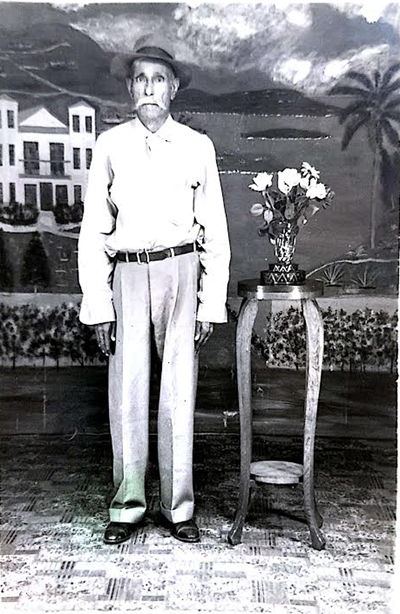 To mark the 172nd year of Indian arrival in Trinidad, I am pleased to share this story with you. It appeared in the Trinidad Guardian. In central Trinidad, covered in tangled vines, towering trees and green vegetation as far as the eye can see, one can find the evidence of a once thriving cocoa, coffee and citrus industry. The rotting boards and rusted galvanise of former barracks, which once housed plantation workers, indentured labourers and former slaves alike, are slowly deteriorating into nothingness, an erasure of a history which crafted the national identity of T&T. Driving through the road, which connects the bustling borough of Chaguanas to sleepy Tabaquite, one comes to a junction and the only landmark is a bar with few patrons. The junction is Massa Junction, and if an adventurous soul takes the road on the right, they will come upon Massa Nature Park, which stands out in an area not known for entertainment. The nature park was opened in 2014 by Johnny Hardial and many of its customers tend to stumble upon it while driving through country roads. The park features swimming pools, a pond filled with fish, a small bar area and an owner who is only too happy to share the story of its origin. In 1917, just before East Indian indentureship ended, Ishwar Hardial boarded a boat full of other labourers headed to the West Indies. His destination was to be Trinidad, a place he had never seen, but where he hoped to earn a living through the indentureship contract he had signed. In Trinidad, he ended up in the minimally populated village of Brasso where he worked on estates full of cocoa, coffee, citrus and bananas. It was there that Ishwar met his wife and fathered 14 children. It was also there that Ishwar created a legacy of kindness and generosity that he passed down to his children and which made him well known in the community. After his contract ended, like many of his jihaji, Ishwar had the option of returning to India or getting land from the government and making a life in Trinidad. Later, he would tell his children that he did not want to go home to Bihar, though he hardly ever spoke of his home. He was adamant that Trinidad was his home and began cultivating the land he had received as payment for his services. He hired workers from the Brasso community to work on his land, cultivating citrus and coffee. “He wasn’t educated because he never went to secondary school,” recalls Ishwar’s son Johnny. “He used to sit under the mango tree and though he only really knew Hindi well, in the little English he knew he would tell us stories of his life here. “He had a mule cart and he would go on the mule cart and sell rice and oil. He had shops and he used to help a lot of people. Anybody had a wedding, they used to help and his jahajis who came on the boat with him, if they were sick he would help them, if they had no food he would help them and then his generosity spread to all the village.” Johnny remembers his father’s generosity to his neighbours. “There was nothing like Indian or African, if someone was building a house, everybody would build the house, and all the ladies would come and cook. “Whether it is East Indian, African or what, we would go into each other’s houses. It still happens in the country but it doesn’t happen in the town.” His father, who was nicknamed Massa because he employed many of the villagers, taught his children through example that it was important to give to those who needed. “In those days, if we go to school and somebody came without food, my father would encourage us to share food with the other children. “People don’t give now. Nobody starved in those days, everybody was giving. Now you can be next door and your neighbour starving and you wouldn’t know or care.” Johnny, who migrated when he was 19, came back to Trinidad four years ago and was horrified at the state of the former estates. “My father came here and worked hard and built something and my parents died and there was nothing to show this was where he used to live or this is what he left behind. “I sat down and thought about how he educated me, gave me all of this and I had nothing to commemorate his impact on the community, not even a bench.” The senior Hardial, Ishwar, died one year before Independence in 1961 after coming to Trinidad on a boat, moving out from the barracks where he lived, purchasing five acres of land and then buying more. “When I came back to Trinidad, the land was overgrown in bush and bamboo. It used to be cocoa, coffee, citrus bananas. It was a prospering estate. The trees were getting old. The idea of the nature park was to build this in their memory and to share a little about him with the people who come here.” For Johnny, his father arrived an Indian but died a Trinidadian who loved this country and what he had accomplished here. Source: Trinidad Guardian Anjani Ganase, 30, is a coral reef champion from the Caribbean. She grew up in Trinidad’s Santa Cruz Valley, where her nature-loving parents inspired a love for the natural world in her. As an island girl, she chose to dedicate her life to the sea. Click on the link here to read an interesting interview with this young lady.
Award-winning T&T film The Cutlass heads to Cannes - watch for its release in canada after aug. 2nd.5/28/2017  The Cutlass played to sold out audiences at the T&T Film Festival last September, taking home the People’s Choice Award and Best Trinidad & Tobago Feature Film. Now, it is headed to the Marché du Film at the Cannes Film Festival in France in May, a rarity for Trinidadian cinema. Inspired by true events, The Cutlass is a dramatic thriller set in the tropical wilderness of Trinidad, and tells the story of a young woman who falls into the grasp of a dangerous sociopath. Taken from her friends at gunpoint and dragged deep into the island rainforest, she must quickly learn to navigate this unforgiving landscape and the tangled mind of her abductor. The film was directed by Darisha J Beresford, written by Teneille Newallo and stars German-born, Tobago-raised Lisa-bel Hirschmann, Trinidadian Arnold Goindhan and Hollywood actor Kirk Baltz. A release said the film is one of three chosen by Film TT to receive both a grant and investment from the T&T government. Newly signed to Leomark Studios - a Los Angeles-based production and distribution company with more than 200 titles in release worldwide - The Cutlass will be making its international market premiere as part of Leomark’s new market line-up. The agency hopes to sell it to multiple territories around the globe, and has a track record of doing so. The film has also signed to Wild Eye Releasing, a distribution company that bought its North American rights, with the exception of its theatrical release. The producers of The Cutlass—Darisha J Beresford, Teneille Newallo and Drew Umland—have held onto the rights to all Caribbean distribution and to theatrical distribution in North America (which includes the US and Canada) and will self-distribute throughout these territories. The film connected with both Wild Eye and Leomark through Ben Yennie at Guerrilla Rep Media, who has been been advising on all aspects of distribution. Self-distribution on such a massive scale seems a first for any T&T film and the producers hope it might break new ground as a distribution model for the English-speaking Caribbean and its diaspora. The Cutlass will be at Cannes from May 17 to 26, and is scheduled for a Caribbean theatrical release this August. The T&T theatrical release is scheduled for August 2 and will subsequently be released in the Caribbean, US and Canada. I am pleased to post this article about a Trini author, Nathalie Taghaboni, Author of Tales from Icebox Land and The Savanoy Series (Across From Lapeyrouse, Santimanitay, Side By Side We Stand). Nathalie has been writing for many years and in 2001 was a columnist for the SHARE Caribbean newspaper in Toronto. Her popular and much quoted columns ran for over ten years. She enjoys writing in the vernacular; she
says that for her, it is one of the best ways to write expressively. She has also written for the Chicken Soup series and was a featured writer for SHE Caribbean Magazine Everybody’s Magazine and continues to write for several online and paper publications. She has recently returned from successful book launchings in Trinidad and Toronto. To read more about the author and her books, click here 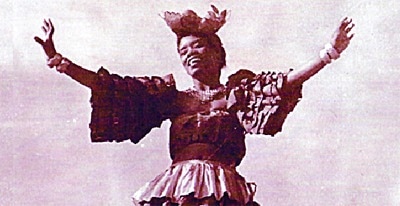 We join the local creative community in mourning the loss of dancer and dance pioneer Julia Edwards. The First Lady of Limbo, Julia Edwards will be remembered for her role in popularizing this indigenous funerary folk dance. Edwards, who first started dancing in 1947 with Boscoe Holder's Dance Company, formed her own dance troupe in 1953 and began performing at venues across Trinidad. It was while they were performing at the Miramar Club in Port of Spain that they were recruited to perform in the film Fire Down below starring Robert Mitchum and Rita Hayworth. Edwards performed the limbo from Africa to the US to Japan and India, introducing the flaming bar in 1959. She also toured extensively with calypso king the Mighty Sparrow. We celebrate her legacy. We remember her contribution to our indigenous dance forms and extend condolences to her family, friends and colleagues. This time it is Heather Caudle who is making news in England. Heather is a past student at St. Joseph's Convent. Click on the link here to read the full article NHS England has announced that it has appointed two senior nurses to newly-created roles with briefs covering the transformation and improvement of the nursing profession.
 Trinidadian author Ingrid Persaud is the regional winner of the 2017 Commonwealth Short Story prize for her story The Sweet Sop. Persaud was among the names of regional winners announced on Monday. The overall winner will be announced in Singapore on June 30. Persaud follows countryman Lance Dowrich who win the regional prize last year. A writer and artist, Persaud currently resides in Barbados. According to her bio, she came to writing and fine art having first pursued a successful legal career that included teaching and scholarship at the Fletcher School of Law and Diplomacy, Tufts University, in the United States and King’s College London. Her creative work has been widely exhibited and her writing featured in several magazines. Her debut novel, If I Never Went Home (2014) was highly praised. Other regional winners are Nat Newman (The Pacific), Anushka Jasraj (Asia), Akwaeke Emezi (Africa), and Tracey Fells, Canada and Europe. The five outstanding stories were successful in a year of fierce competition when the Prize received a record 6,000 entries from across the Commonwealth. “It speaks to the high quality of the shortlisted stories that the judges’ decisions were rarely straightforward – and it speaks to the high quality of the winners that none of the judges left the conversation unsatisfied by the choices we ended up with. These are engaging and moving stories that honour and understand the potential of the short story form to burrow in on intimate stories and also to give you vast canvases painted with precise strokes. They also reveal the extent to which human concerns cross borders while the ways in which those concerns are played out are always individual and specific," said Kamila Shamsie, Chair, 2017 Commonwealth Short Story Prize. Source: Loop News May 24, 2017. 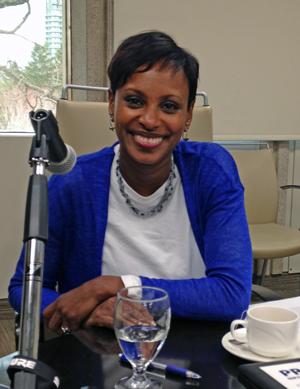 And she is a former student of St. Joseph's Convent, Port of Spain. When Professor Rhonda McEwen began her academic career in the late 1990s, little did she know she would be at the forefront of the boom in new media that has secured her place as an expert in the field of mobile technology. Since then, she has established herself as a trailblazer in exploring how devices affect the human experience and the way that people with disabilities communicate, and she has just been named the Canada Research Chair in Tactile Interfaces, Communication and Cognition. It is an “honour to be recognized for [my] work and be given this massive endorsement by the federal government,” says McEwen, of UTM’s Institute of Communication, Culture, Information and Technology. She will be undertaking three interrelated projects that involve technology such as tablets and smartphones, but also wearable technology and virtual-reality platforms. “My PhD work focused on young people – and by young people I meant people who were transitioning from high schools into universities – and my interest was in the roles mobile phones played in social support,” says McEwen. “This was in 2006, so this was in the old days – this was pre-smartphones, so people were still on their BlackBerrys or on flip phones – still I could see a shift in social interactions surrounding these new media and I wanted to investigate what was happening for users who were also in transition.” “Even back then you could see the huge influence that these devices were having and I was really fascinated both from a technological aspect, but also from a social aspect. What are the social consequences of embedding these technologies in our lives?” In a similar trajectory, she currently researches the communicative interactions that arise when users engage with new media technologies, focusing on the cognitive effects of using touch-input devices. Her new book, Understanding Tablets from Early Childhood to Adulthood: Encounters with Touch Technology, co-authored with McGill's Adam Dubé, takes a critical look at what is commonly considered to be the intuitive nature of tablets. “I am interested in what this new, tactile technology means for how we make sense of the world,” says McEwen. “By way of example, people may have read about the ‘quantified self’ where we are tracking data about ourselves, for example ‘how far did you walk today? How much sleep did you get?’” “These are the devices that are taking data inputs off of our bodies and giving us outputs through our bodies, driven by necessity and creativity by the user, and we have to figure out how to slot this information into our everyday life. This is a new consideration.” Something that is also new and a somewhat unanticipated for McEwen is watching a Muppet she helped to shape come to life on the small screen: she is an advisor for the long-running, beloved children’s program Sesame Street, and her research informed the creation of Julia, the show’s first character with autism, introduced in April 2017. McEwen, who has been on the advisory board for autism programming for the Sesame Street Workshop since 2013, says it was a great privilege to be involved in this collaborative endeavour. “Muppets are also media. Julia is a girl-Muppet with a mission to demystify autism for children and the broader society,” says McEwen. “I was approached by the program coordinators of the Sesame Workshop because of my research on mobile applications (apps) for children on the Autism Spectrum and I worked with some of the finest researchers in the world to provide evidence as content and feedback on design for Julia’s stories and for the accompanying assistive technology apps.” To read a more comprehensive article about Julia, visit the CBC website. McEwen is extremely enthusiastic about pursuing the CRC projects and the various collaborations she has ongoing with other researchers. She is also proud of her group of dedicated students on the Mississauga campus. “I have two undergraduate students here through the Research Opportunity Program [ROP] at UTM, and they are working with me on 360-video and virtual-reality project where we are investigating visually-induced motion sickness,” says McEwen. “A completely separate project involves another set of three UTM undergraduate students and looks specifically at children with Rett syndrome, which is a rare genetic disorder that impedes the ability to speak and affects mainly girls, and examines the efficacy of using of eye-tracking on screens as an effective form of communication.” “I do a lot of work with my undergraduates and I am really proud of that. At UTM we have excellent undergraduate students and my team of researchers here are so curious and engaged. Before this grant came along they volunteered their time, and I paid them when I could from other grants, but now that I have this CRC funding, I’m delighted to have the ability to compensate them for the hard work that they put in.” Source: [email protected] |
T&T news blogThe intent of this blog is to bring some news from home and other fun items. If you enjoy what you read, please leave us a comment.. Archives
July 2025
Categories
All
|
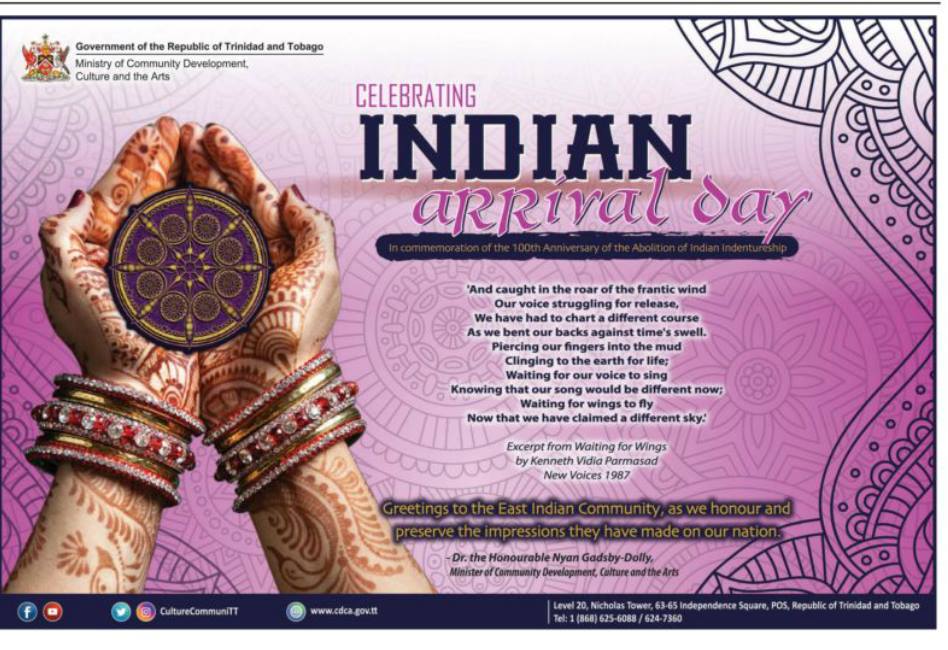
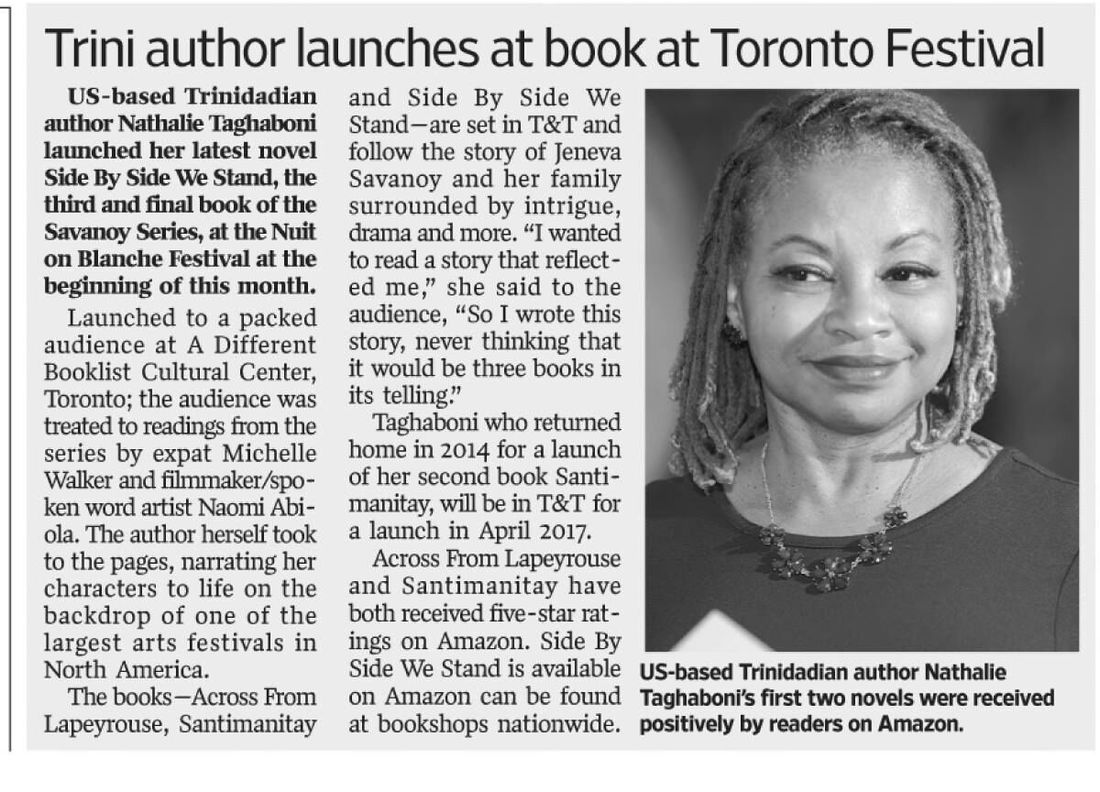
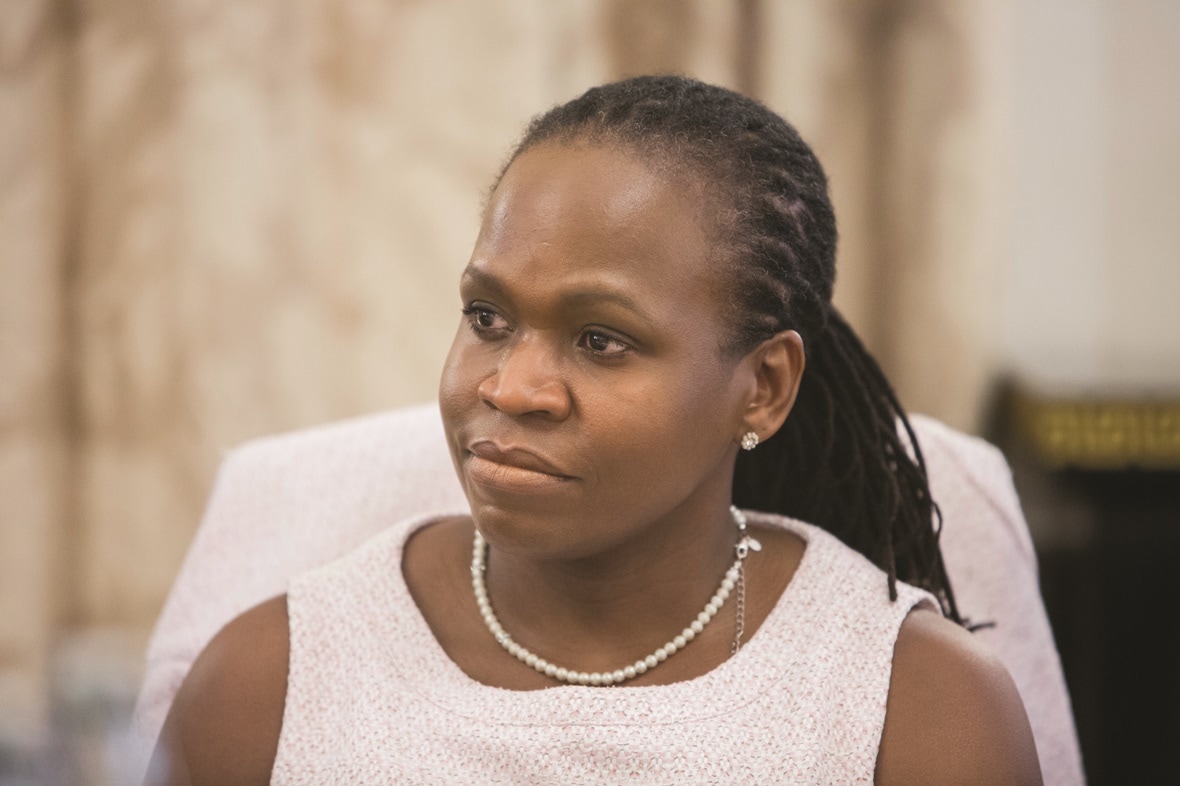

 RSS Feed
RSS Feed